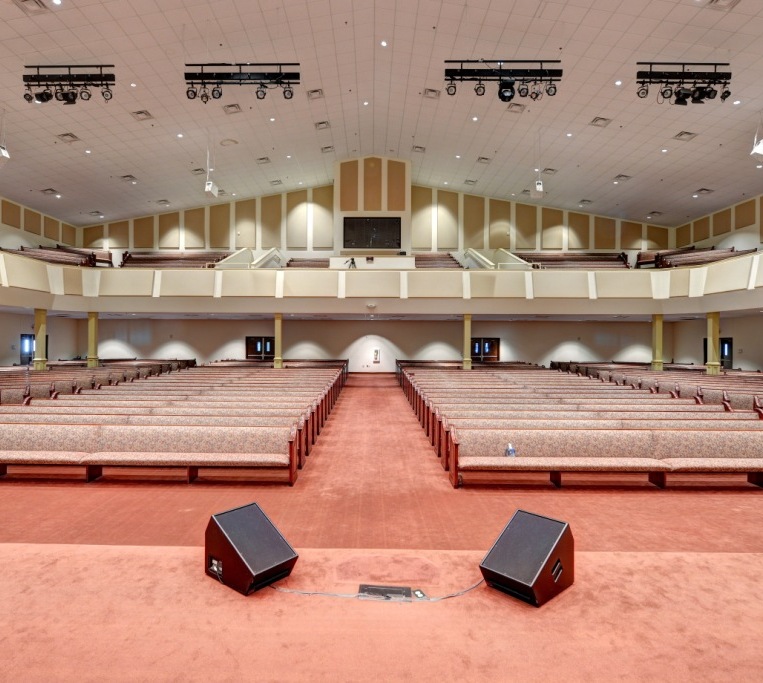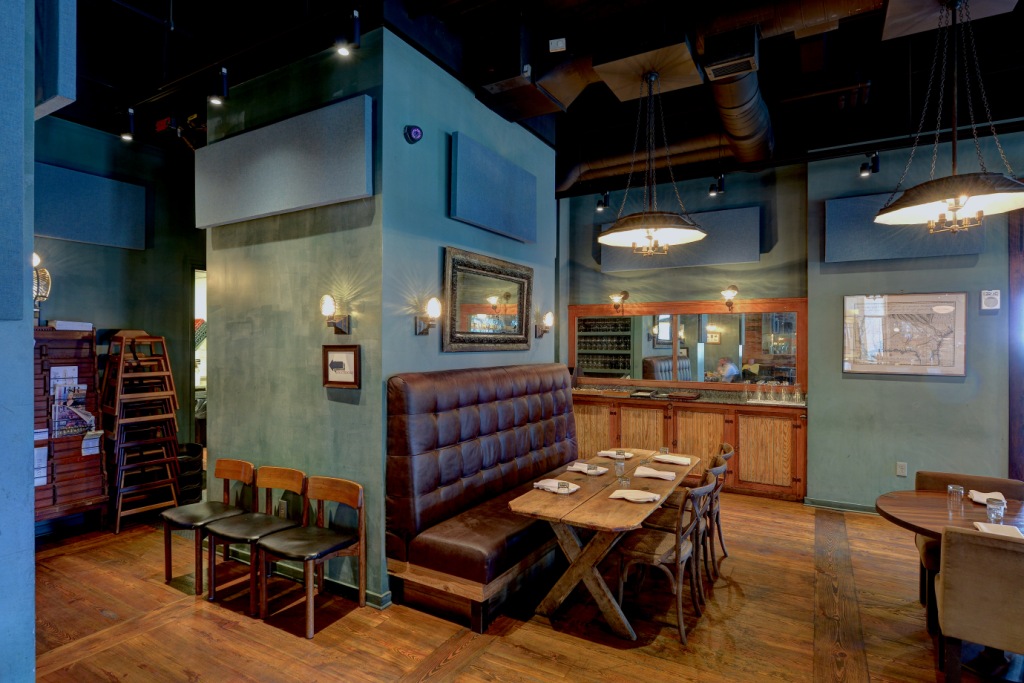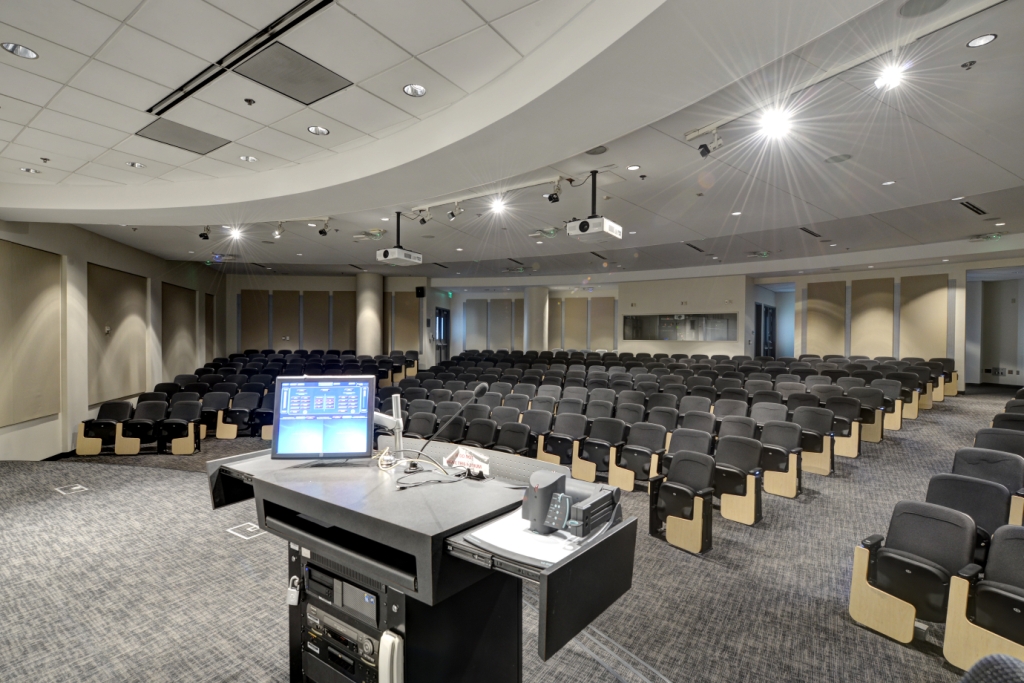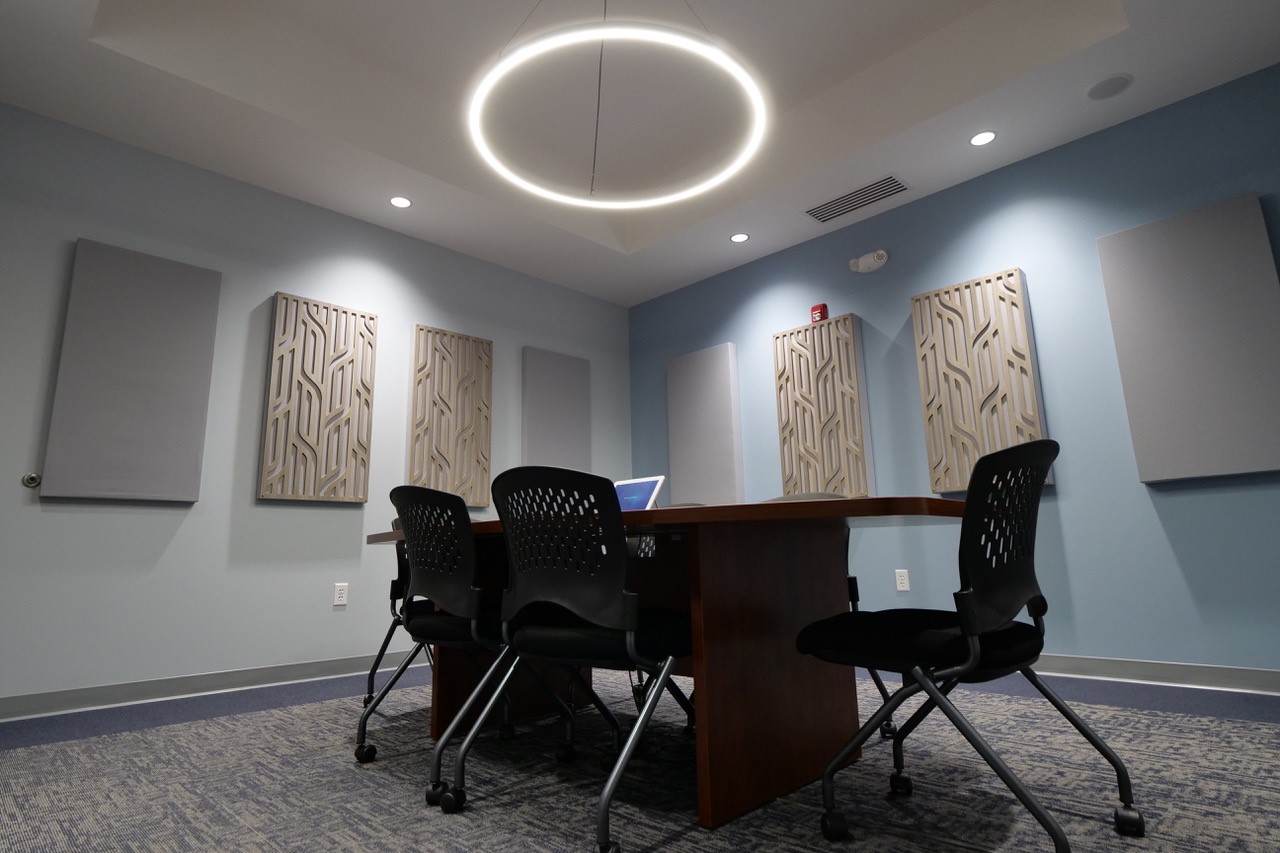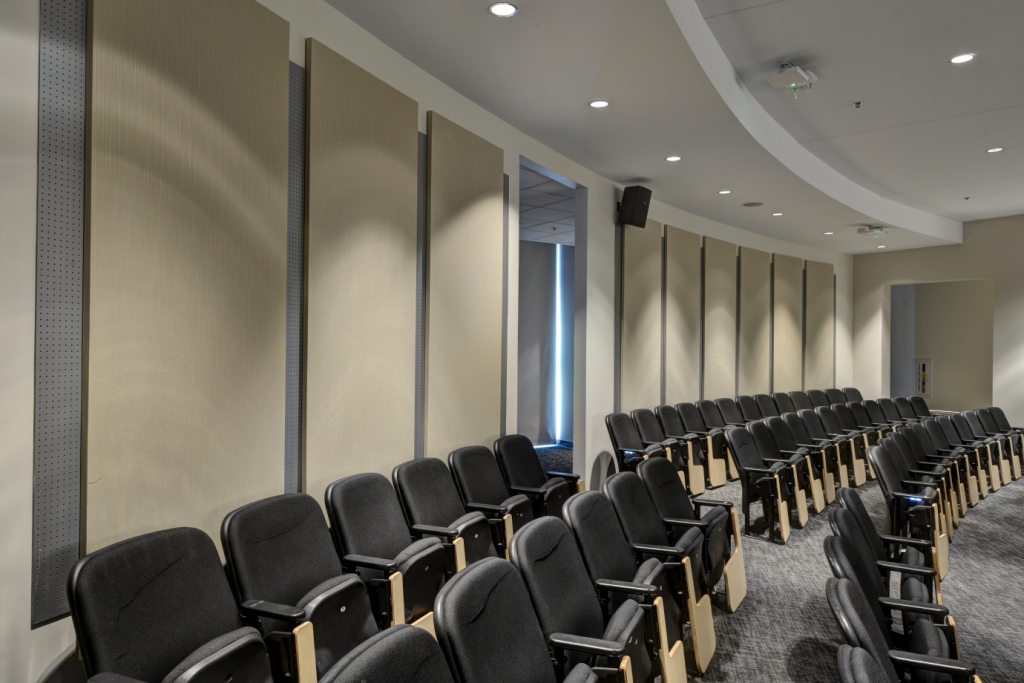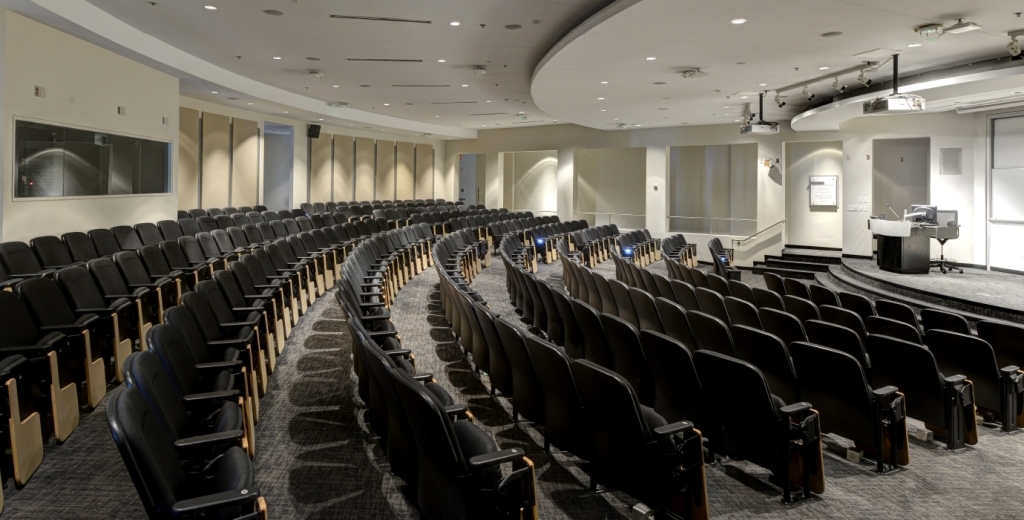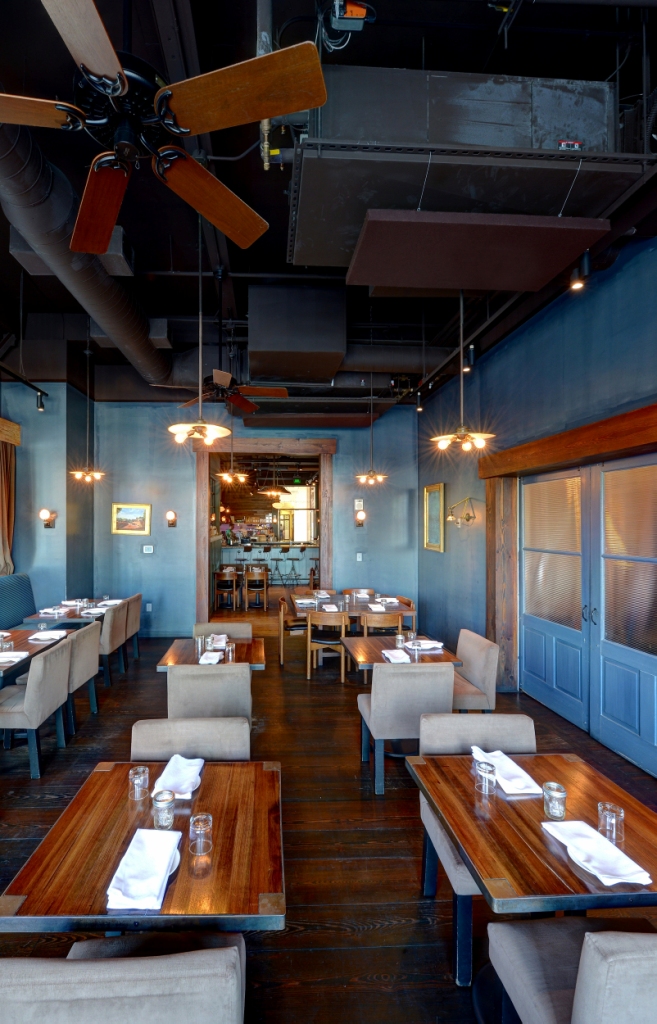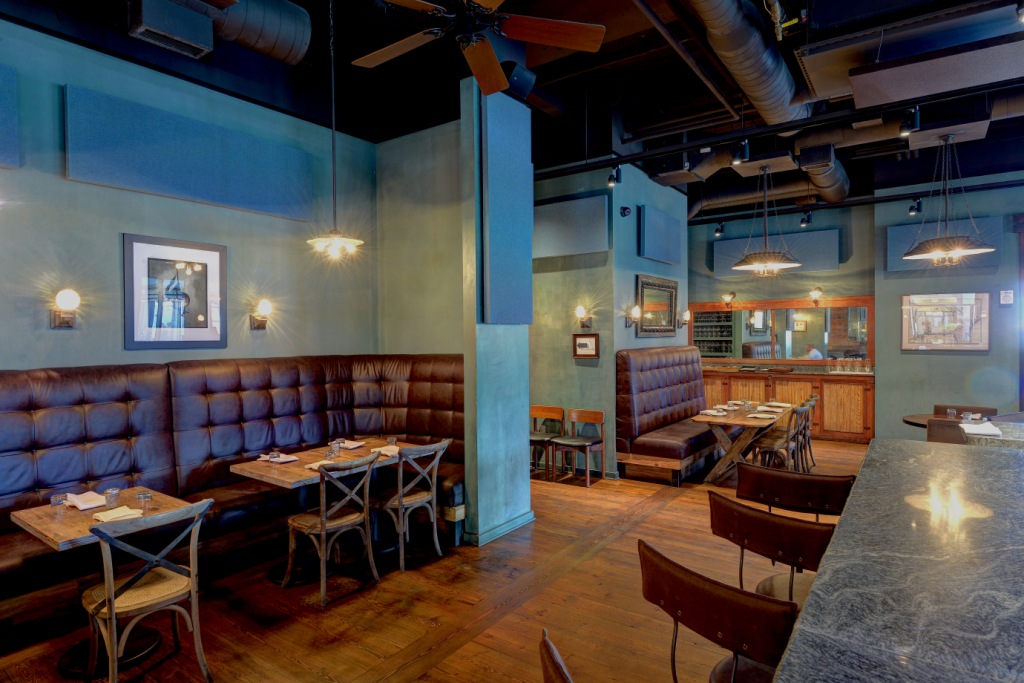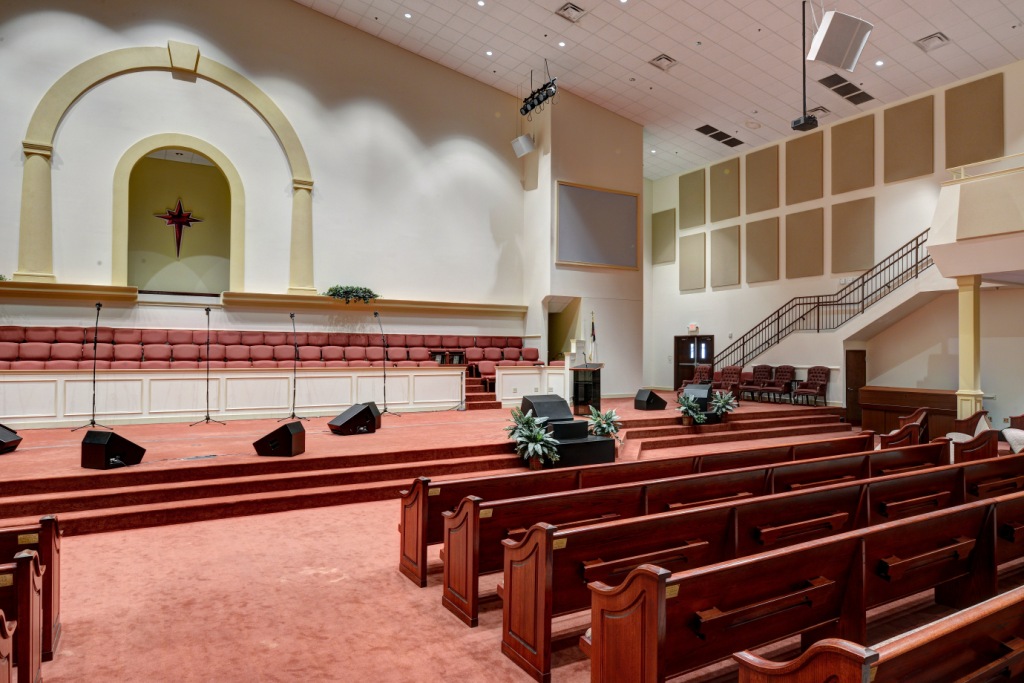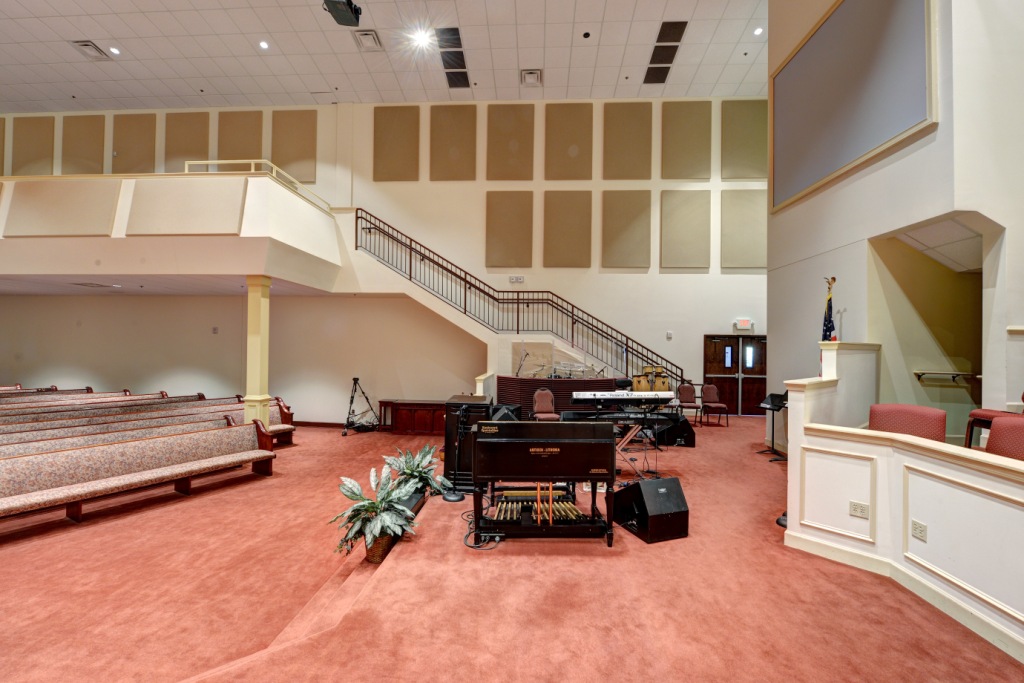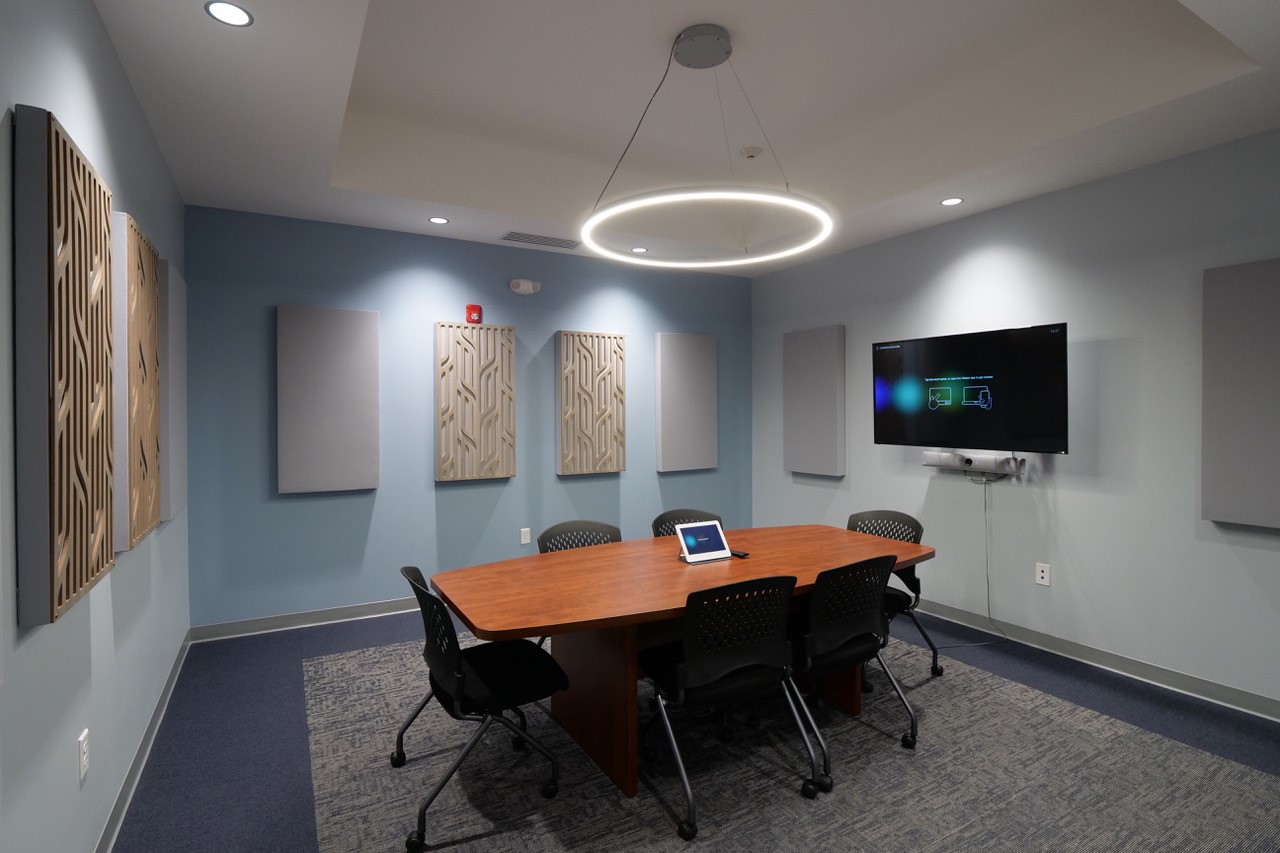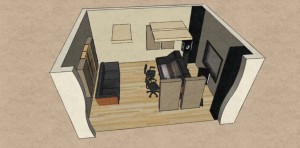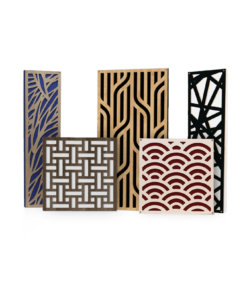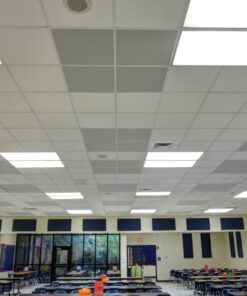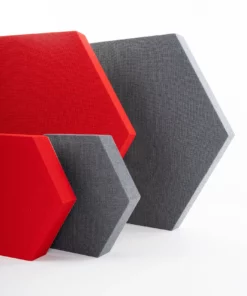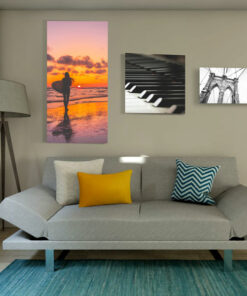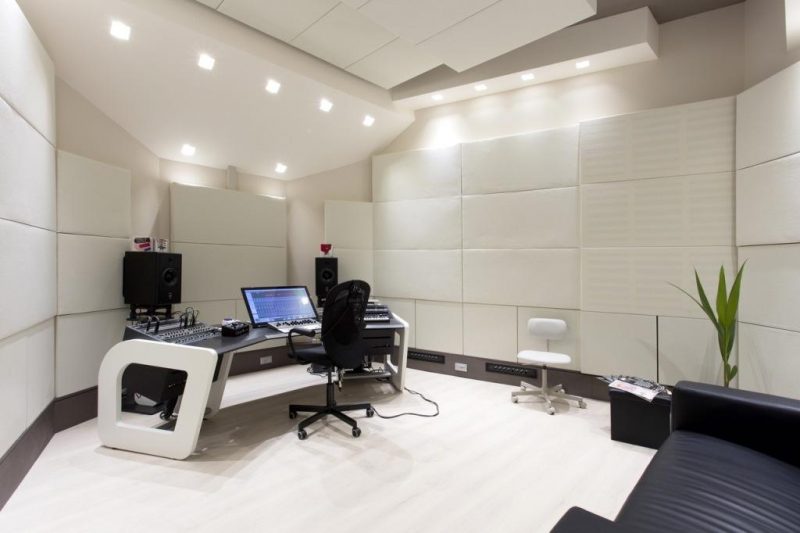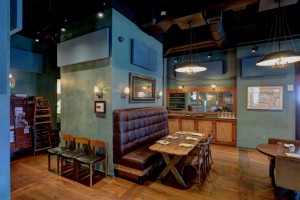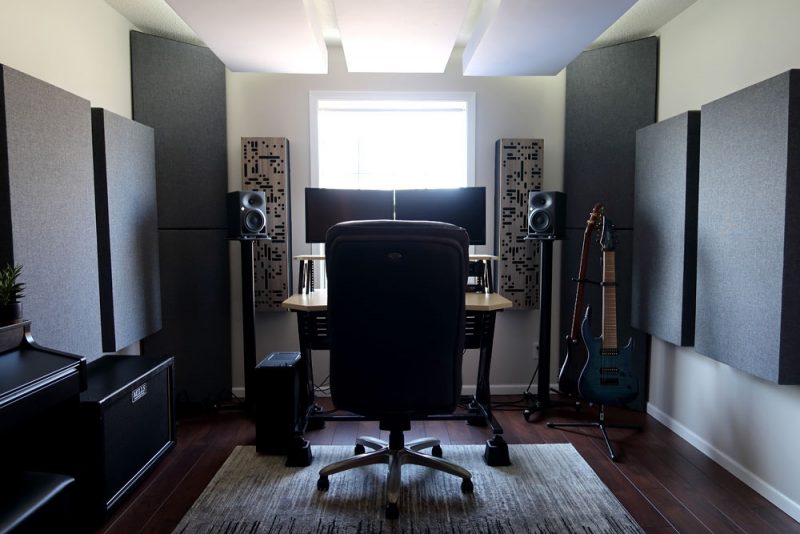If you’ve ever asked yourself, “How many acoustic panels do I need?”, you’re not alone. Whether you’re treating a home theater, recording studio, office, or restaurant, the right number and placement of acoustic panels can significantly improve sound quality, reduce reverberation, and control sound reflections. This guide explores the most important factors and gives you a smart, simple way to estimate your panel count using our Acoustic Panel Calculator.
Quick Start: Acoustic Panel Calculator
Our acoustic panel calculator is designed to give a quick estimate of the number of acoustic panels you might need based on room size, intended use, and desired coverage. It’s a helpful first step to find the right amount of sound treatment—but for best results, we recommend using the calculator alongside our Free Acoustic Advice Form, where our Design Team can provide a custom recommendation.
What Is RT60, and Why Does It Matter?
RT60 refers to the amount of time it takes for sound to decay by 60 decibels in a space after the sound source has stopped. In simpler terms, it’s a measure of how long sound “lingers” in a room. A long RT60 creates echo and muddiness, while a short RT60 makes a space feel dry and focused.
But the real key isn’t just reducing RT60—it’s balancing it across the frequency spectrum. Many untreated rooms have long decay times in the low frequencies and much shorter decay in the highs, which makes the room sound boomy, muddy, uneven or unnatural. Our calculator helps estimate how much treatment is needed to bring RT60 down for better noise reduction and more balanced room acoustics—and more importantly, to make it more consistent across all frequencies.
Acoustic Panels Calculator
This calculation is an estimate only!. Please reach out to us for free expert advice for more specific and accurate treatment plans, especially important for rooms where audio is a key component, like recording rooms, listening rooms, control rooms, home theaters, mixing rooms, studios, and any musical applications.
We recommend reaching out to us for advice for recording rooms, control rooms, mixing rooms, studios, and any musical applications.
General Rules for Acoustic Panel Coverage
The most important factor in determining how effective your acoustic treatment will be is coverage area—in other words, how much of your room’s surface area is treated with panels. A few panels alone may help slightly, but increasing the total square footage of sound absorbing panels creates dramatic improvements in sound quality, clarity, and speech intelligibility. As always, using the right type of sound panels will give the best results, with balanced sound in the midrange and treble frequencies along with better performance in the lower frequencies where appropriate.
 Here’s a general rule of thumb:
Here’s a general rule of thumb:
- 10% coverage: Noticeable effect. Clearly discernible improvement in reverberation time.
- 15-20% coverage: More obvious improvement. Ideal for restaurants, classrooms, offices, and gyms.
- 20-35% coverage: Significant acoustic control. Ideal for churches, conference rooms, home theaters, and interview rooms.
- 35%+ coverage: Full treatment. Recommended for recording studios, mix rooms, and other critical listening environments.
Room Function: What Is the Use of the Room?
Different room types have different needs. Here’s a breakdown of common room categories:
Studios, Home Theaters, Interview Rooms
- Require higher treatment density
- Often need bass traps for low-frequency control
- Diffusion is often used in listening rooms for improved stereo imaging
Classrooms, Gymnasiums
- Large spaces with many sound sources
- Recommend 15-20% coverage distributed evenly
- Focus on reducing overall reverb and improving clarity
Open Offices
- Require distinct acoustic zones for work, calls, and meetings
- Combine wall panels, ceiling panels, and soft dividers
Churches
- Often feature high ceilings and hard surfaces
- Recommend 17-25% coverage to improve speech intelligibility
Restaurants
- Recommend 15-20% coverage
- Discreet solutions such as Art Panels can blend with interior design
Home Theaters and Studios
- Benefit from intensive treatment
- Combine bass traps, acoustic panels, and diffusion
- Focus on first reflection points, rear wall, and ceiling panels
Important Acoustic Concepts
- Sound waves bounce off hard surfaces, creating unwanted reverberation and comb filtering.
- Soundproofing is different from acoustic treatment. While soundproofing blocks noise from entering or leaving a space, acoustic treatment improves the room sound inside.
- Acoustic panels made of fiberglass, rockwool, or other dense materials absorb reflections, especially in the mid and high frequencies.
- Bass traps are thicker panels that absorb low-frequency energy.
- Diffusion scatters sound waves to create a more natural and spacious sound.
Panel Placement: Where to Put Acoustic Panels
The next question after “how many” is “where?” Proper acoustic panel placement ensures better coverage and maximum impact. Different rooms will have different placement strategies, again reach out to our Design Team for guidance for your room. Some common placement strategies for various room types include:
- Treat first reflection points on side walls and ceiling in a listening room.
- Use bass traps in corners, along the rear wall, and possibly behind speakers where space permits.
- Place panels at ear height when seated to get the most out of the fewest number of panels when getting started.
- A good general rule of thumb in all rooms is to distribute panels evenly throughout the room to maximize consistency and performance.
Room Size and Ceiling Height
- Smaller rooms typically have stronger low-frequency problems, so bass traps are especially important.
- High ceilings increase reverb time; adding ceiling panels can make a big difference.
It’s All About Coverage Area
While the calculator can help DIYers estimate what they need, the most important factor for all types of rooms—whether you’re building your own panels or using professional-grade treatments—is always coverage area. The more surface area treated with effective sound absorbing materials, the more noticeable the improvement in sound quality and reverberation control. While acoustic foam can absorb high frequencies, it has limited impact on low-frequency sound absorption. That’s why many professionals rely on fiberglass or rockwool panels, which are more effective across a broader frequency range.
Still Unsure? Let GIK’s Design Team Help
The Acoustic Panel Calculator is just the beginning. Once you have a ballpark idea of your needs, the best step is to contact GIK Acoustics directly through our Free Acoustic Advice Form. Our experts will analyze your room dimensions, use case, and aesthetic preferences to develop a custom solution that maximizes performance while staying within your budget.
Whether you’re treating a living room, building a recording studio, outfitting a conference room, or upgrading your home theater, GIK Acoustics has the experience and product range to help.
Ready to take the next step? [Fill out our Free Acoustic Advice Form] and let’s build the perfect sound together.
Get Acoustic Advice
Suggested Products
Acoustic Panels
Acoustic Panels
Acoustic Panels
Acoustic Panels
Acoustic Art Panels


